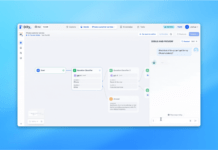目次
この記事はアピリッツの技術ブログ「DoRuby」から移行した記事です。情報が古い可能性がありますのでご注意ください。
こんにちは。
KBMJでRuby on Rails を使ったweb開発に携わっているyoppiといいます。
Ruby on Railsでは、Webフレームワーク機能以外にも、Ruby標準のクラスなどに関数の追加なども行われます。これらの関数は便利な割にそんなに知られていない気がするので、紹介してみようかな~と思います。
at
at(位置:integer)
文字列の指定した位置の文字を返します
例)
“Hello”.at(0) # => “H”
“Hello”.at(4) # => “o”
“Hello”.at(10) # => nil
“Hello”.at(-1) # => “o” 最後から1文字
“Hello”.at(-4) # => “e”
“Hello”.at(-10) # => nil
first
first(長さ:integer 初期値:1)
文字列の先頭から指定した長さの文字列を取得します
例)
“Hello”.first # => “H”
“Hello”.first(3) # => “Hel”
“Hello”.first(10) # => “Hello”
“Hello”.first(0) # => “Hello”
“Hello”.first(-3) # => “He” 最後から4文字目から先頭
“Hello”.first(-10) # => “”
from
from(位置:integer)
文字列の指定した位置から最後までの文字列を取得します
例)
“Hello”.from(1) # => “ello”
“Hello”.from(3) # => “lo”
“Hello”.from(10) # => “”
“Hello”.from(0) # => “Hello”
“Hello”.from(-2) # => “lo” 最後から2文字目から最後
“Hello”.from(-10) # => “”
last
last
文字列の最後から指定した長さの文字列を取得します
例)
“Hello”.last(1) # => “o”
“Hello”.last(3) # => “llo”
“Hello”.last(10) # => “Hello”
“Hello”.last(0) # => “Hello”
“Hello”.last(-2) # => “llo” 先頭から2文字目から最後
“Hello”.last(-10) # => “”
to
to
文字列の先頭から指定した位置までの文字列を取得します
例)
“Hello”.to(1) # => “He”
“Hello”.to(3) # => “Hell”
“Hello”.to(10) # => “Hello”
“Hello”.to(0) # => “H”
“Hello”.to(-2) # => “Hell” 最後から2文字目まで
“Hello”.to(-10) # => “”
starts_with?
starts_with?
文字列が指定した文字列で始まるかを判定します
例)
“Hello”.starts_with?(“H”) # => true
“Hello”.starts_with?(“Hel”) # => true
“Hello”.starts_with?(“Helo”) # => false
“Hello”.starts_with?(“ello”) # => false
ends_with?
ends_with?
文字列が指定した文字列で終わるかを判定します
例)
“Hello”.ends_with?(“o”) # => true
“Hello”.ends_with?(“ello”) # => true
“Hello”.ends_with?(“Hel”) # => false
“Hello”.ends_with?(“oilo”) # => false
camelize
camelize(先頭の文字をどうするか:シンボル(:lower小文字|:upper大文字 初期値:upper)
パス形式からRubyのクラス名にする。/は::に変換されます。
例)
“active_record”.camelize #=> “ActiveRecord”
“active_record”.camelize(:lower) #=> “activeRecord”
“active_record/errors”.camelize #=> “ActiveRecord::Errors”
“active_record/errors”.camelize(:lower) #=> “activeRecord::Errors”
classify
classify
テーブル名をRubyのクラス名にする
例)
“egg_and_hams”.classify #=> “EggAndHam”
“post”.classify #=> “Post”
constantize
constantize
文字列のオブジェクトが読み込まれていれば、そのオブジェクトを返す
例)
“Module”.constantize #=> Module
“Array”.constantize #=> Array
dasherise
dasherize
「_(アンダースコア)」を「-(ハイフン)」に置換する
例)
“puni_puni” #=> “puni-puni”
demodulize
demodulize
モジュールの部分を取り除く
例)
“ActiveRecord::CoreExtensions::String::Inflections”.demodulize #=> “Inflections”
“Inflections”.demodulize #=> “Inflections”
foreign_key
foreign_key(単語間をアンダースコアで区切るか:boolean 初期値:true)
クラス名から外部キー名にする
例)
“Message”.foreign_key #=> “message_id”
“Message”.foreign_key(false) #=> “messageid”
“Admin::Post”.foreign_key #=> “post_id”
humanize
humanize
アンダースコアで区切られた文字をスペース区切りにし、最初の単語の先頭の文字を大文字にする。また、「_id」があれば削除する。そのことで、人が読みやすい形にする
例)
“employee_salary” #=> “Employee salary”
“author_id” #=> “Author”
pluralize
pluralize
複数形にする
例)
“post”.pluralize #=> “posts”
“octopus”.pluralize #=> “octopi”
“sheep”.pluralize #=> “sheep”
“words”.pluralize #=> “words”
“the blue mailman”.pluralize #=> “the blue mailmen”
“CamelOctopus”.pluralize #=> “CamelOctopi”
singularize
singularize
単数形にする
例)
“posts”.singularize #=> “post”
“octopi”.singularize #=> “octopus”
“sheep”.singluarize #=> “sheep”
“word”.singluarize #=> “word”su
“the blue mailmen”.singularize #=> “the blue mailman”
“CamelOctopi”.singularize #=> “CamelOctopus”
tableize
tableize
クラス名をテーブル名にする
例)
“RawScaledScorer”.tableize #=> “raw_scaled_scorers”
“egg_and_ham”.tableize #=> “egg_and_hams”
“fancyCategory”.tableize #=> “fancy_categories”
titleize
titleize
全ての単語の先頭の文字を大文字にする
例)
“man from the boondocks”.titleize #=> “Man From The Boondocks”
“x-men: the last stand”.titleize #=> “X Men: The Last Stand”
underscore
underscore
camelizeの逆の処理をする。名前空間を含めたクラス名をパスにする
例)
“ActiveRecord”.underscore #=> “active_record”
“ActiveRecord::Errors”.underscore #=> active_record/errors
まとめ
地味に役立ちそうなものが多い感じですかね。
camelizeとかはバンバン使えるようになりたいですよ。










































